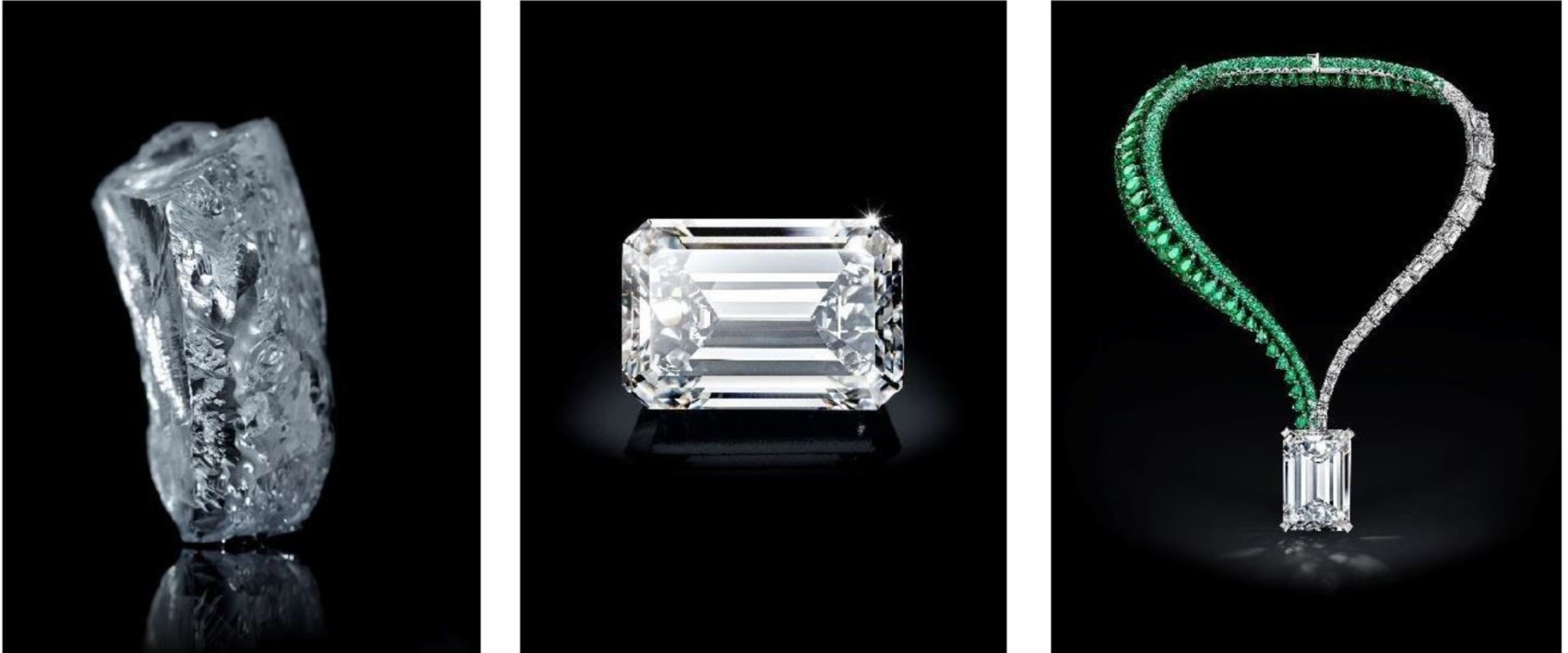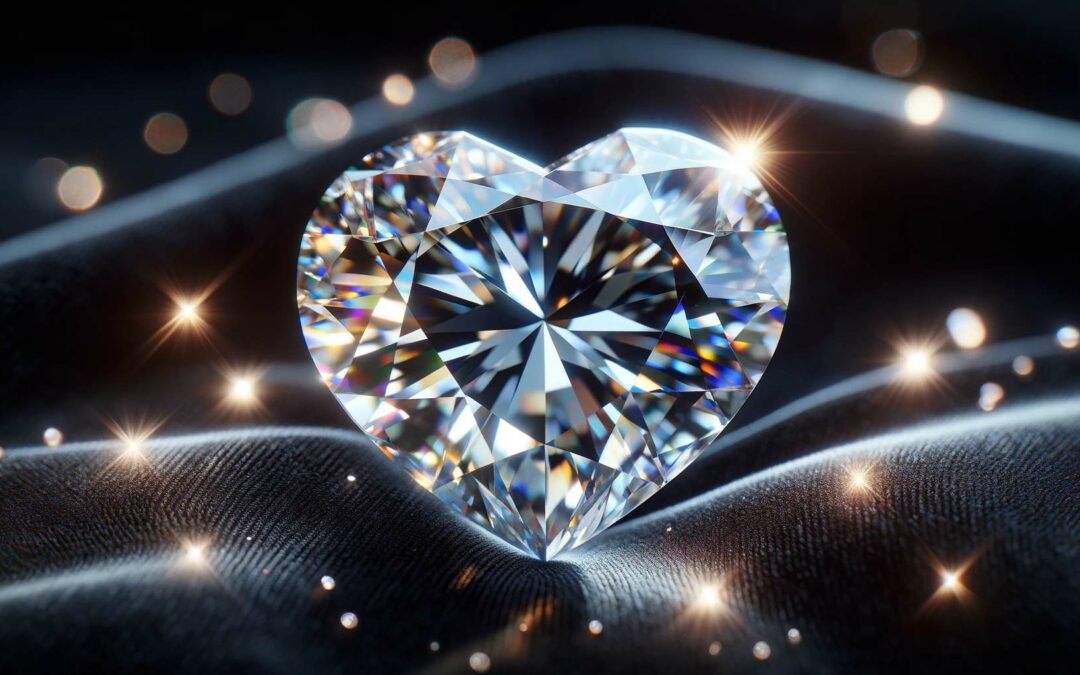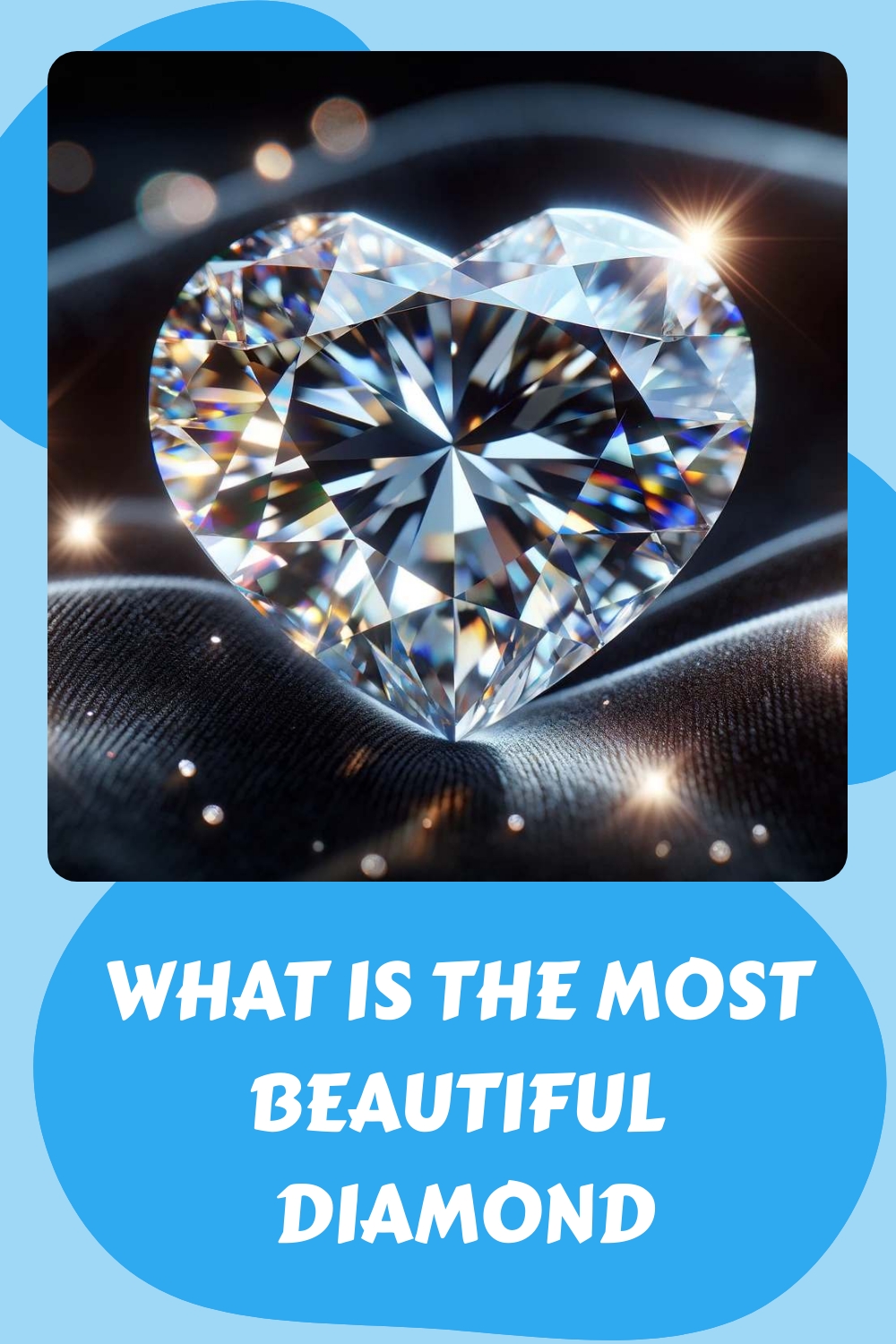Article Contents
In the quest for the most beautiful diamond, one transcends mere aesthetic appeal to embrace a symbol of belonging and history.
Among these eternal stones, the Hope Diamond often garners much attention for its striking blue hue and storied past.
Yet, the notion of beauty in diamonds is as multifaceted as the gems themselves, reflecting more than just physical allure.
It embodies a deep connection to the narratives that these precious stones carry and the legacies they represent.
As connoisseurs and enthusiasts gather to admire these marvels of nature, they share in the reverence of their splendor and rarity.
Such diamonds are physical entities and beacons of heritage, forming an invisible bond among those who cherish their unparalleled magnificence.
Key Takeaways About the Most Beautiful Diamond
- The most beautiful diamonds are not only aesthetically appealing but also hold historical significance and a sense of belonging.
- Blue diamonds, like the Blue Moon Diamond, are highly desirable due to their rarity and unique mesmerizing hue.
- The Moussaieff Red Diamond is a breathtaking rarity that commands attention and admiration, symbolizing unparalleled scarcity.
- Esteemed institutions such as the National Museum of Natural History showcase illustrious diamonds, inviting enthusiasts to celebrate their exclusive beauty and learn about their stories and characteristics.
Legendary Diamonds of History
Several diamonds have achieved legendary status throughout history due to their exceptional characteristics and fascinating backstories. Among these, the Hope Diamond is perhaps the most storied, with its deep blue color and intriguing history of reputed curses and royal ownership, capturing the public’s imagination.
Secured within the walls of the National Museum of Natural History in Washington, D.C., this enigmatic gem has lured over 100 million visitors since 1958, embodying not just opulence but also a sense of collective heritage and wonder.
Another storied jewel, the Taylor-Burton diamond, epitomizes the glamour and romance of Hollywood’s golden era. Gifted to Elizabeth Taylor—a name synonymous with legendary beauty and luxury—the diamond’s sheer size and brilliance symbolize a larger-than-life love story that continues to enchant fans worldwide.
These famous diamonds have etched their place in history, each with their distinct hue, from the Hope Diamond’s mesmerizing blue to the soft glimmer of the Taylor-Burton’s clear sparkle. They provide a tactile connection to the tales of the past, inviting a sense of belonging among those who gaze upon their splendor.
As we delve deeper into the world of precious stones, we transition into exploring a spectrum of colors that further define the rarity and allure of these natural masterpieces. Vintage turquoise jewelry often features a rich, deep blue-green hue that captivates the beholder. This timeless stone has been prized for centuries, and its unique shade evokes a sense of tranquility and elegance. Whether set in intricate silver or gold designs, vintage turquoise jewelry continues to charm collectors and enthusiasts alike with its undeniable beauty and historical significance.
A Spectrum of Colors
Nature’s palette shines in the Aurora Butterfly of Peace‘s diverse array of colored diamonds, each stone a testament to the extraordinary beauty that can emerge from the depths of the earth. This collection encapsulates a spectrum of colors, boasting an array of hues, each with unique appeal and rarity.
Among them, the blue diamond stands out for its enchanting allure. Particularly, the coveted Blue Moon Diamond serves as an example of the vivid blue diamond, which is both an aesthetic marvel and a gemological rarity.
The Gemological Institute of America (GIA) assigns these diamonds the Natural Fancy classification to denote their exceptional color intensity. While contentious, the transformation of the Wittelsbach Graff Diamond into a deep blue diamond underscores the lengths to which connoisseurs will go to enhance a diamond’s visual appeal and, by extension, its value.
The GIA’s clarity grade further distinguishes the purity and brilliance of these stones, elevating their status within the color spectrum.
Diamond aficionados and collectors seek to belong to an exclusive world where each colored diamond is a masterpiece. These diamonds reflect nature’s artistry and symbolize a deep human desire to possess beauty that is as rare as it is profound. Owning natural fancy coloured diamonds is not just about acquiring a gemstone; it is about embracing a legacy of rarity and splendor forged over millions of years. These extraordinary treasures captivate the eye with their vivid hues and stand as timeless emblems of individuality and refinement. To hold such a diamond is to hold a piece of Earth’s magnificent evolution, forever connecting the owner to its unparalleled beauty.
Unparalleled Brilliance and Clarity
In the realm of precious gems, few can rival the impeccable VVS1 clarity and vibrant hue of the Oppenheimer Blue Diamond. Its Internally Flawless peers, such as the Cullinan Heritage, are esteemed not only for their unblemished nature but also for the profound depth of their beauty, which transcends even the highest expectations. This caliber of diamond, often sought after for the most luxurious engagement rings, epitomizes the pinnacle of desirability and exclusivity in the world of fine jewelry.
Renowned figures like Richard Burton understood the allure of such gems, as he famously gifted Elizabeth Taylor a beautiful diamond set in a platinum ring—an emblem of enduring love visible even to the naked eye. The Oppenheimer Blue, with its serene blue coloration, stands as a testament to nature’s artistry, a masterpiece that commands attention and admiration.
Moreover, diamonds of this extraordinary quality are not confined to personal collections; some, like the Dresden Green, have found homes in prestigious institutions such as the National Museum of Natural History, where their brilliance can be shared with the world. Here, they serve as a beacon of the Earth’s natural magnificence, forever encapsulating the essence of unparalleled brilliance and clarity.
Iconic Diamonds in Pop Culture
The allure of diamonds has been immortalized in pop culture, with iconic gems such as the Hope Diamond and the Taylor-Burton Diamond featuring prominently in film, literature, and celebrity lore. These beautiful diamonds have captivated the imaginations of millions and symbolize the timeless quest for beauty and rarity that transcends generations.
Here are four of the most iconic diamonds that have left an indelible mark on pop culture:
- The Hope Diamond: Known for its legendary curse, this 45.52-carat blue diamond glows red under UV light and has inspired numerous stories, contributing to its mystique and celebrity.
- The Blue Moon Diamond: Renamed the Blue Moon of Josephine, this exquisite 12.03-carat diamond fetched a record $48.5 million at a Hong Kong auction, highlighting the exceptional desire for unique colored diamonds.
- The Wittelsbach Graff Diamond: Initially a fancy grayish-blue, Sir Laurence Graff transformed it into a deeper blue diamond, weighing 31.06 carats, showcasing the transformative allure of diamonds in the hands of master craftsmen.
- The Taylor-Burton Diamond: A symbol of Hollywood romance and opulence, this 69.42-carat pear-shaped diamond epitomizes the grand gestures and aspirational luxury that diamonds represent in pop culture.
As we delve into the essence of what makes a diamond truly captivating, the rarity factor in beauty cannot be overlooked.
The Rarity Factor in Beauty
Evaluating the beauty of a diamond often involves considering its rarity, a quality that elevates the most extraordinary gems above their peers. The 163.41 carat flawless D-color emerald-cut de Grisogono diamond, for instance, is not just a beautiful white diamond; its singularity lies in its exceptional size and purity, traits that are scarcely encountered even among the most renowned diamonds in the world.
In 2017 the diamond was sold by Christie’s for €28.7 million. Such a diamond is a treasure beyond comparison because of its rarity, which increases its allure.

The De Grisogno Diamond Shown In Rough, Emerald Cut And On A Sapphire And Diamond Necklace. Courtesy Christie’S Press Release.
The Blue Heart Diamond, a gem whose azure hue is as unique as it is mesmerizing, is another example of the rarity factor in diamond beauty. The scarcity of blue diamonds, representing a mere fraction of all diamonds, underpins their significant worth and the profound desire to possess such a marvel.
Similarly, the Moussaieff Red Diamond’s breathtaking rarity and color command attention and admiration, securing its place within the pantheon of the world’s most coveted jewels.
These illustrious diamonds are not just aesthetically pleasing but are symbols of unparalleled scarcity. Their stories and characteristics are often showcased in esteemed institutions like the National Museum of Natural History, inviting enthusiasts from around the globe to partake in the celebration of their exclusive beauty.
Frequently Asked Questions
What Is the Best Diamond in the World?
The best diamond balances rarity, superior color grades, and ethical sourcing. Investment-worthy stones boast meticulous cutting techniques, certified authenticity, and historical significance, appealing to connoisseurs seeking both legacy and exclusivity in their acquisitions. When choosing the perfect diamond online, it is essential to consider the seller’s reputation, return policy, and any independent certifications. Trusted online retailers offer a wide selection of diamonds, each with its unique characteristics, allowing buyers to compare and select their ideal stone from the comfort of their own home. Additionally, customers can also take advantage of virtual consultations and 360-degree videos to ensure they are making an informed and satisfying purchase.
Which Type of Diamond Is the Most Valuable?
In assessing diamond value, rarity, superior color grades, substantial carat weight, and precise cut are paramount. Historical significance and geographical origins also influence investment value, making such gems coveted assets among discerning collectors.
What Is the Most Perfect Diamond Ever Found?
The discovery of the 163.41-carat diamond sets carat records and epitomizes geological rarity. Its flawless D-color grade and expert cut underscore market trends, valuing such historic finds for their unparalleled beauty and craftsmanship.
What Is the Most Flawless Diamond?
With a 99.95% clarity rating, the Cullinan Heritage Diamond exemplifies the pinnacle of diamond grading. Its clarity importance, coupled with precise cut significance and notable carat weight, underscores its investment potential and celebrity status.



